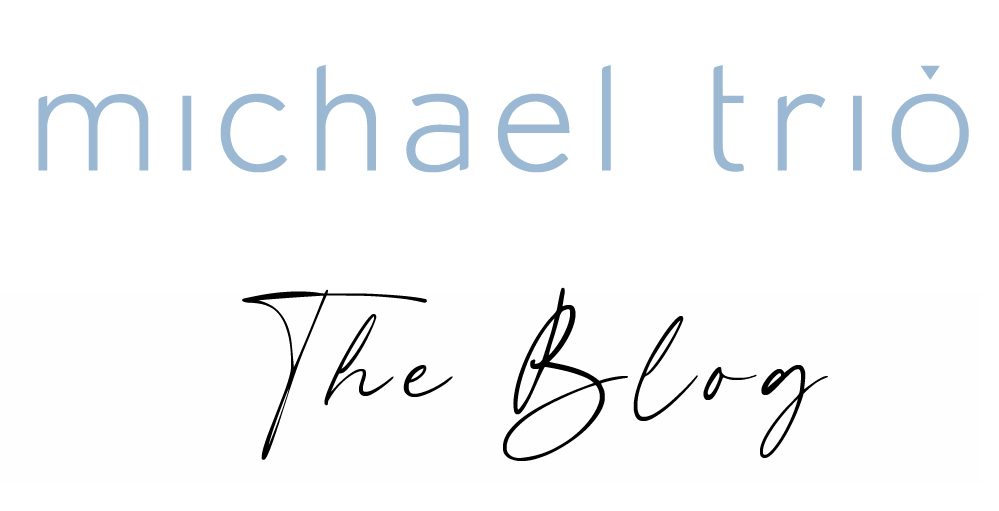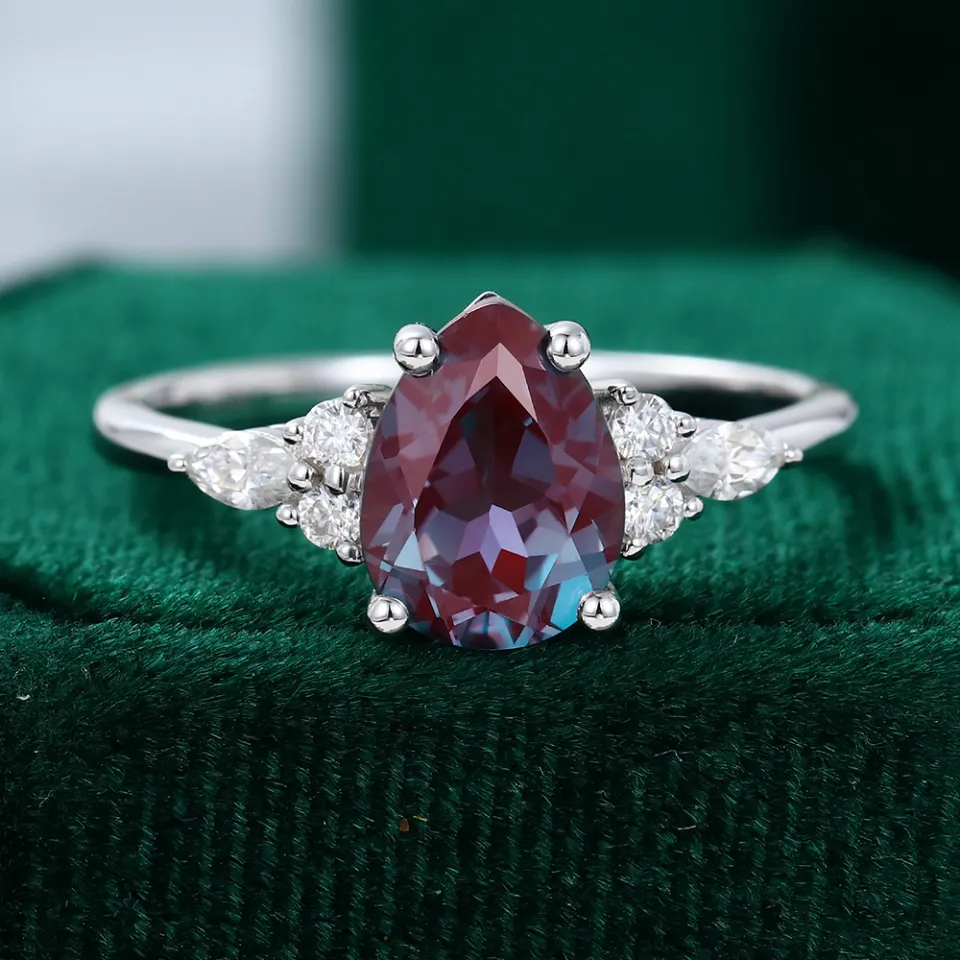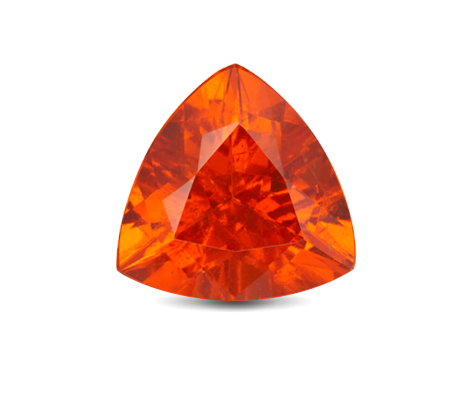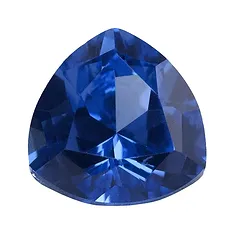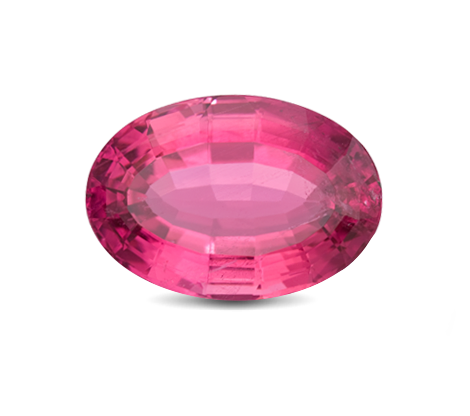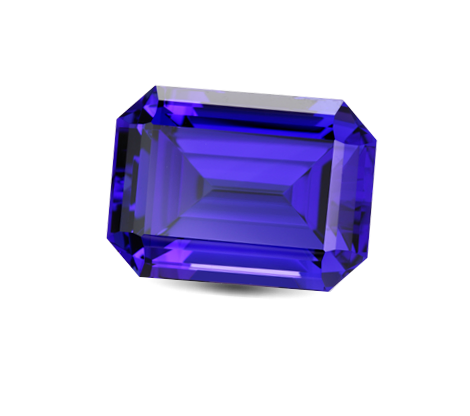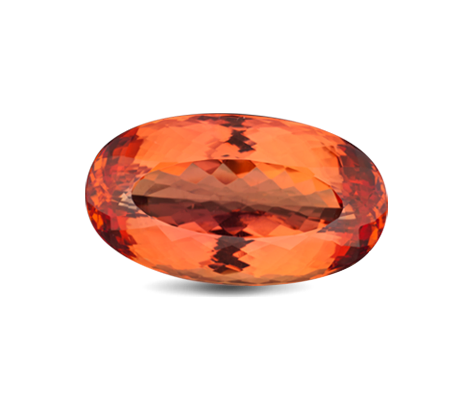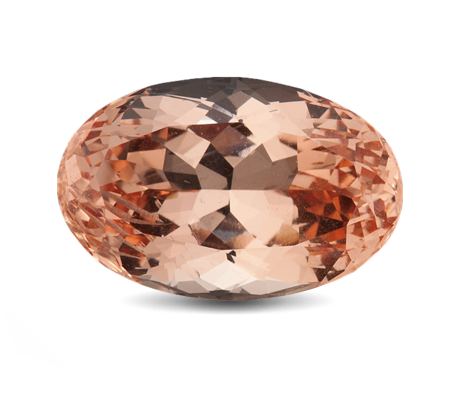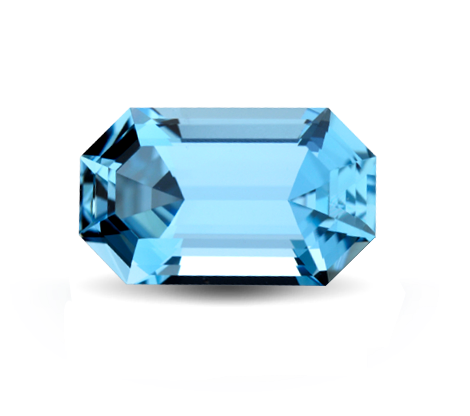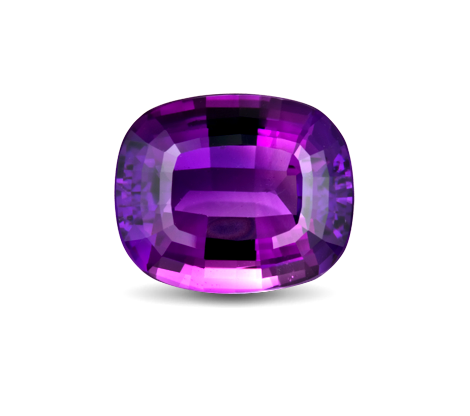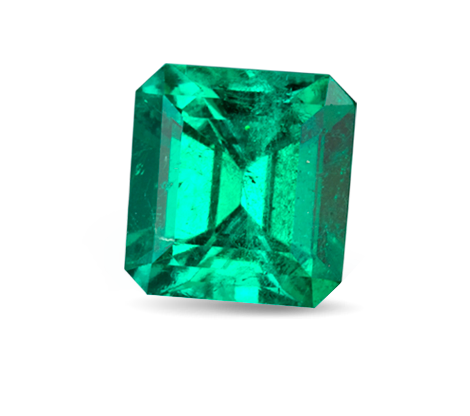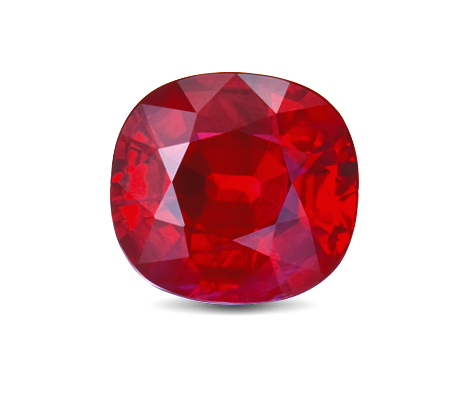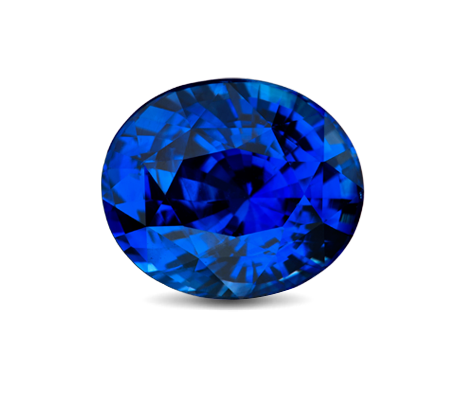Overview
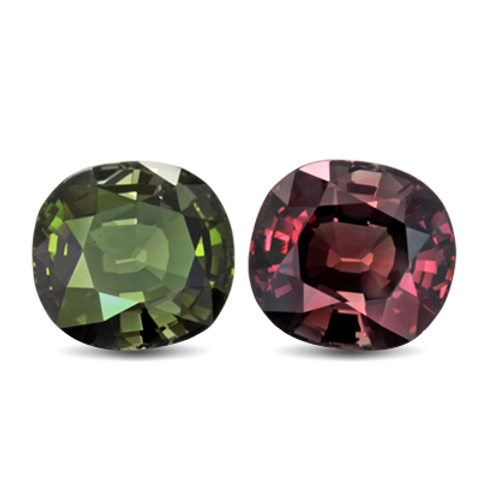
About Alexandrite
Name after Czar Alexander II, Emperor of Russia. This gem displays unique characteristics unlike other gems. Found in the Ural Mountains in Russia, the gem displays a different colour under different lightings. A lovely green under fluorescent light (daylight), to a brownish or purplish red under incandescent light from a candle or lamps. Hence the gem is often called “Emerald by day, Ruby by night” due to its dramatic change in colour.
Alexandrite Properties
Mineral: Chrysoberyl
Chemistry: Beryllium Aluminum Oxide ((BeAl2O4))
Refractive Index: 1.746 – 1.755
Birefringence: 0.008 to 0.010
Specific Gravity: 3.73
Mohs Hardness:8.5
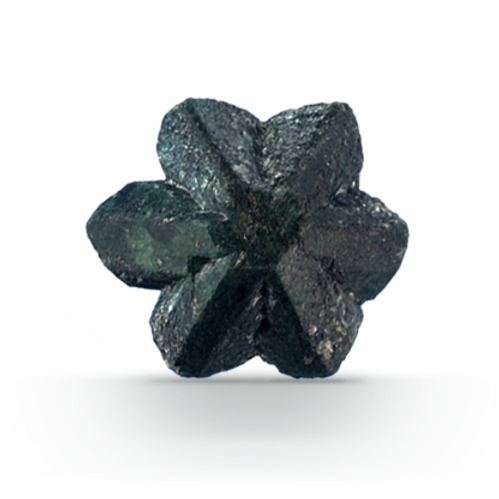
Colours In Daylight
Blueish Green
Brownish Green
Green
Colours in Incandescent Light
Grayish Purple
Purplish Red
Deep Purple
Common Shapes




Birthstone Month
June
Treatments / Enhancements
Oiling Treatment is usually used to improve colour and clarity
Origins
Brazil, India, Madagascar, Russia, Sri Lanka, Tanzania
Colour
Colour and colour change is the most significant factor affecting the value of an Alexandrite.
Colour preferences do change in time and from culture to culture. Nevertheless, the most sought after colour is bluish green under daylight and purplish red under incandescent light with a strong colour change from one light source to the other. As the secondary colour becomes gray or brown, the intensity of the colour change becomes weaker, and because of this, the value of an Alexandrite decreases drastically.
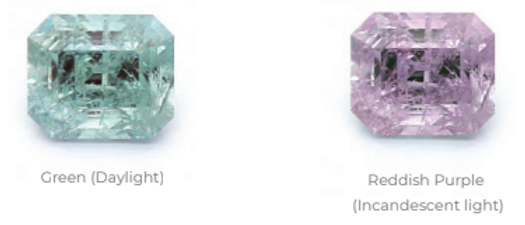
Alexandrite with 2 different undertones
Colour Grades of Alexandrite
Alexandrite not only have different colour/undertone shades depending on the lights, they also come shades of green with varying intensity as well. Below is some of the alexandrites with different shade intensity. The highest quality alexandrite is green to bluish green in daylight and red to purplish red in incandescent light. Its colour saturation is either moderately strong or strong. If too strong, it will appear black. If not strong enough, it will not reach colour intensity.
Dark
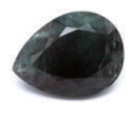
Deep
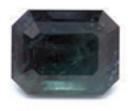
Vivid
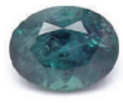
Intense
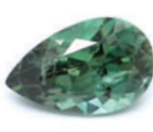
Medium Intense
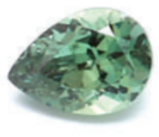
Light
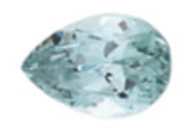
Very Light
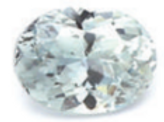
Alexandrite Scarcity
Due to over mining, Alexandrite within Russia has become limited and scared. This means that production of intense, fine coloured gems is lesser than 200 years ago so they are much harder to come by.
There are also other sources of alexandrite. Sri Lankan alexandrites are larger compared to its Russian counterpart but their colour is not as desirable. Sri Lankan alexandrites’ green is more yellowish rather than bluish green and their red is more brownish rather than purplish unlike the Russian alexandrites.
Brazilian alexandrites have similar quality as the Russian gems but the production has also decreased as well. As of right now, supply for alexandrites is low and fine colour ones are extremely rare.
Clarity
Clarity of a gem is judged based off the gem’s opacity and how much inclusions does the gem contain. The assessment of clarity is often done thru eye clean and it follow the same grading as with diamonds. Inclusions within the gem affects the value of the gem. The more visible the inclusions are to the visible eye, the lower the value of the gem.

Alexandrite with 3 different opacity
Alexandrites tend to contain inclusions. Value of the alexandrite depends on how visible the inclusions are. Obvious inclusions, or inclusions that reduce transparency or brightness, lower an Alexandrite’s value drastically.
Several types of inclusions are found in amethyst. Among these are long thin mineral inclusions oriented parallel to each other. This effect is called chatoyancy or the cat’s eye effect.
Clarity Grades of Alexandrite
Clarity in transparent alexandrites assessed by naked eye only and at distance of about 40cm. Transparent alexandrites that are free of inclusions are common, but visible inclusions are common and accepted.
Chatoyancy / Cat’s Eye Effect
Chatoyancy/ Cat’s Eye Effect is an optical effect caused by light reflecting off dense concentrations of parallel needles or hollow tubes in cabochon-cut gem materials. In order to maximize the effect, the base of the cabochon should be cut in such a way that it is parallel to the inclusions in order to produce an even effect across the dome.
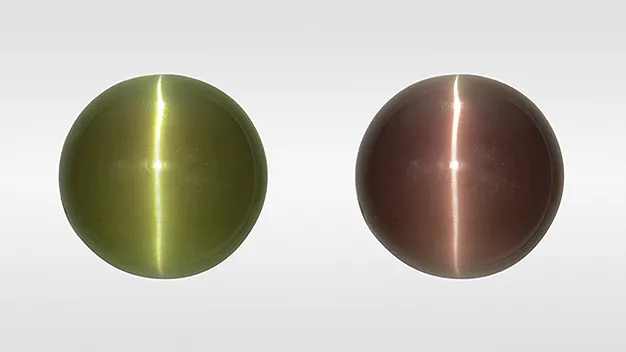
Parallel inclusions are not distributed throughout the stone and are only in zones or narrow bands in certain cases. Thus the cutter must orient in a way that produce a cat’s eye.
This inclusion makes the gem more exquisite special. It increases the gem’s value much like star sapphire and star rubies.
Cut
Alexandrites are usually cut into a large variety of shapes, ranging from round shape to pear shape. They are also cut into faceted stones with shape such as classic triangular and kite-shaped facet arrangements called brilliant cuts, rows of concentric parallel facets called step cuts, and mixed cuts that combine both.
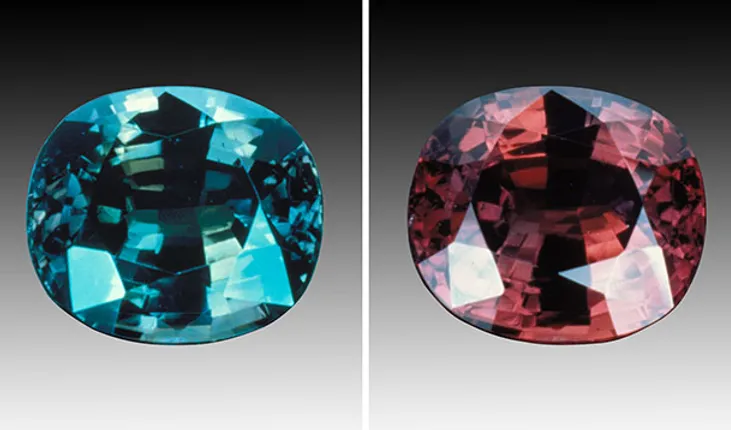
Alexandrite displays the characteristics of pleochroism where is displays different colours at different situations. This makes it challenging for cutters to orientate the gem for fashioning in order to display the strongest colour change through the crown of the gem. It is important to position it in ways that the final stone shows both purplish red and green when facing up.
Carat
Gemstones such as Alexandrite are denser than diamonds, therefore the carat weight for a gemstones differs from that of a diamond. Size of gemstones, including alexandrite, are measured by carat as well as their diameter in millimeters.
Due to the scarcity of the gem itself, most fashioned alexandrite are relatively small. They are usually less than one carat. Larger sized gems and fine quality gems have higher value as compared to the normal ones.
